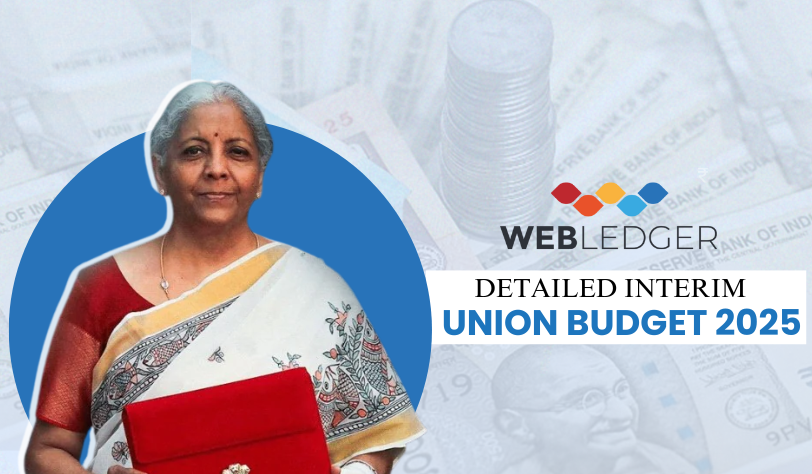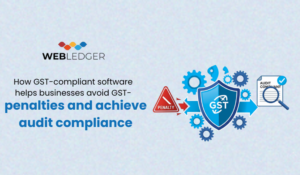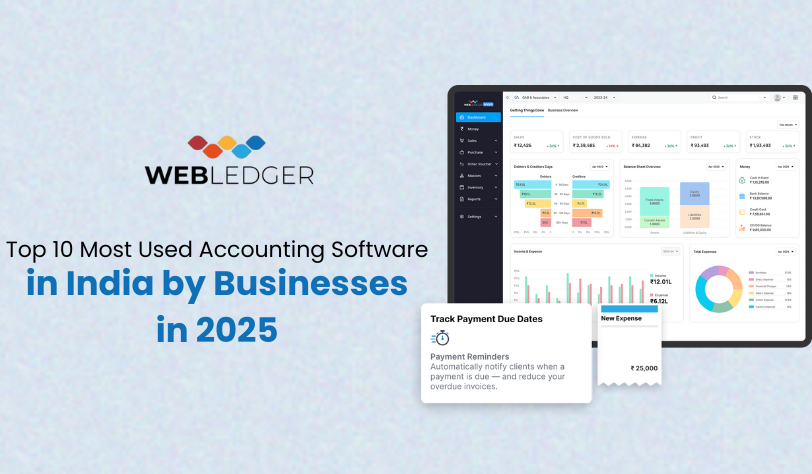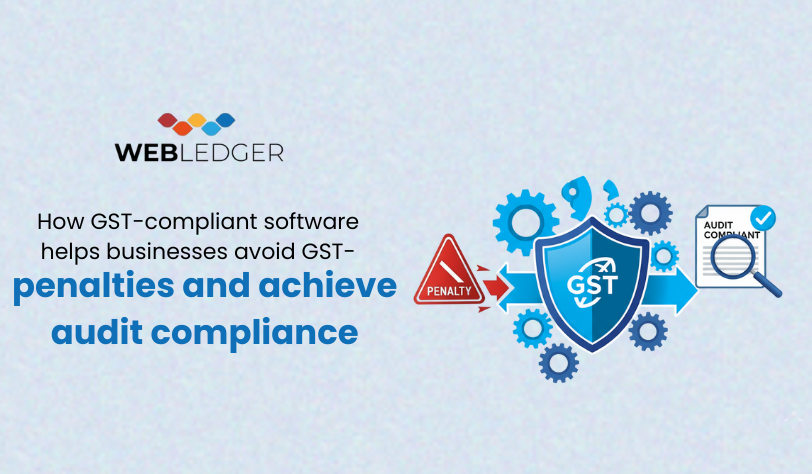Detailed Interim Union Budget 2025
India’s Union Budget for the financial year 2025-26, presented on February 1, 2025, by the honourable Finance Minister Nirmala Sitharaman, aims for accelerated growth and inclusive development.
Union Budget 2025 aims to:
- Focus on agriculture, small and medium-sized businesses, investment, and exports.
- Invest significantly in infrastructure, education, healthcare, and rural development.
- Simplify tax rules to make compliance easier and encourage more people to follow them.
- Expect a fiscal deficit of 4.4% of GDP (Gross Domestic Product).
- Reduce poverty, improve access to quality education and healthcare, create skilled jobs, increase women’s participation in the workforce, and support farmers to ensure food security.
Part A of the interim budget 2025 is covered in this blog.
Part A
Let’s delve into Part A of the Union Budget 2025. The key features of this section of the budget are as follows:
Agriculture as the first engine
The government will launch the ‘Prime Minister Dhan-Dhaanya Krishi Yojana’ in partnership with states, inspired by the Aspirational Districts Programme. This initiative will target 100 districts with low agricultural productivity and aims to enhance productivity, promote crop diversification, improve irrigation facilities, increase post-harvest storage, and facilitate access to credit, benefiting around 1.7 crore farmers.
i) Building Rural Prosperity and Resilience
The programme will focus on rural women, young farmers, rural youth, marginal and small farmers, and landless families. With technical and financial support from multilateral development banks, best practices will be integrated, starting with 100 developing agri-districts in Phase 1. The finance minister further added that they aim to make migration from rural to urban areas not a compulsion but should be taken optionally for the rural people.
ii) Aatmanirbharta in Pulses
The Government is implementing the National Mission for Edible Oilseed to achieve self-sufficiency in edible oils, leveraging farmers’ capabilities to meet our needs. A decade ago, we successfully aimed for self-sufficiency in pulses, increasing cultivated area by 50% and providing procurement support. Thus, launching a 6-year “Mission for Aatmanirbharta in Pulses,” focusing on Tur, Urad, and Masoor. Central agencies will procure these pulses from registered farmers over the next 4 years.
iii) Comprehensive Programme for Vegetables & Fruits
Our growing awareness of nutritional needs reflects a healthier society. As income levels rise, consumption of vegetables, fruits, and shree-anna increases. The government will launch a comprehensive programme to boost production, improve supply efficiency, enhance processing, and ensure fair prices for farmers in collaboration with states. Institutional mechanisms will support the participation of farmer-producer organisations and cooperatives.
iv) Makahana Board in Bihar
The government will establish a Makhana Board in Bihar to enhance makhana’s production, processing, value addition, and marketing. Farmers will be organised into Farmer Producer Organizations (FPOs), receiving training and support to access relevant government schemes.
v) National Mission on High-Yielding Seeds
A National Mission on High Yielding Seeds will be started. This mission aims to:
Improve research efforts, develop and spread seeds with high yields, resist pests, and be strong against climate change, and make more than 100 seed varieties available for sale that have been released since July 2024.
vi) Fisheries
India is the second-largest country in the world for fish production and aquaculture. Seafood exports are worth ₹60,000 crore. To tap into the potential of our marine sector, the Government will create rules for sustainable fishing in the Indian Exclusive Economic Zone and the High Seas. Special attention will be given to the Andaman & Nicobar and Lakshadweep Islands.
vii) Mission for Cotton Productivity
‘Mission for Cotton Productivity’ was announced to help millions of cotton farmers. This mission will last for 5 years and aims to improve cotton farming by increasing productivity and sustainability. The government will support farmers with the best science and technology and promote the growth of extra-long staple cotton varieties. This initiative aligns with our plan for the textile sector and will help farmers earn more money while ensuring a steady supply of quality cotton for India’s traditional textile industry.
viii) Enhanced Credit through KCC
Kisan Credit Cards (KCC) help 7.7 crore farmers, fishermen, and dairy farmers get short-term loans. The loan limit under the Modified Interest Subvention Scheme will increase from ₹3 lakh to ₹5 lakh for loans taken through KCC.
ix) Urea Plant in Assam
The government has reopened three inactive urea plants in the Eastern region to boost urea production. Additionally, a new plant will be built in Namrup, Assam, with an annual capacity of 12.7 lakh metric tons to increase urea supply further.
x) India Post as a Catalyst for the Rural Economy
India Post is set to help boost the rural economy. With 150,000 rural post offices, the India Post Payment Bank, and a network of 240,000 Dak Sevaks, India Post will play a key role in this initiative. It will also change into a major public logistics organisation. This transformation aims to support Viswakarmas, new entrepreneurs, women, self-help groups, micro, small and medium enterprises (MSMEs), and large businesses.
xi) Assistance to NCDC
The Government will extend assistance to NCDC for its lending activities in the cooperative sector.
MSMEs as the 2nd engine
MSMEs (Micro, small, and medium enterprises), as the 2nd engine, encompass 5.7 crore manufacturing and service units. Currently, there are over one crore registered MSMEs employing 7.5 crore people and contributing 36% of manufacturing and 45% of exports. To enhance their efficiency, the investment and turnover limits for MSMEs will be increased to 2.5 and 2 times, respectively. This will boost their growth and create more employment opportunities for youth. Details are in Annexure D.
i) Significant enhancement of credit availability with guaranteed cover
To make it easier for businesses to get loans, the government will increase the credit guarantee cover:
– For Micro and Small Enterprises, the limit will rise from ₹5 crore to ₹10 crore. This change is expected to lead to an additional ₹1.5 lakh crore in credit over the next 5 years.
– For Startups, the limit will go from ₹10 crore to ₹20 crore. The guarantee fee will also be reduced to 1% for loans in 27 key sectors that support Atmanirbhar Bharat.
– For strong exporter MSMEs, term loans can now be up to ₹20 crore.
In addition, the government will introduce special Credit Cards for micro-enterprises registered on the Udyam portal. These cards will have a limit of ₹5 lakh, and the government plans to issue 10 lakh of them in the first year.
ii) Fund of Funds for Startups
The Alternate Investment Funds (AIFs) for startups have received over ₹91,000 crore in commitments. These funds are backed by a Fund of Funds from the Government, which contributed ₹10,000 crore. A new Fund of Funds will be created with an additional contribution of ₹10,000 crore, expanding its scope.
iii) Scheme for First-time Entrepreneurs
A new scheme will support 5 lakh first-time entrepreneurs, specifically women, Scheduled Castes, and Scheduled Tribes. This will offer term loans of up to ₹2 crore over the next 5 years. The scheme will include successful strategies from the Stand-Up India scheme. It will also provide online training to build entrepreneurship and managerial skills.
iv) Measures for Labour-Intensive Sectors
The government will implement specific policies and support measures to encourage job creation and entrepreneurship in labour-intensive sectors.
v) Focus Product Scheme for Footwear & Leather Sectors
To improve productivity and competitiveness in India’s footwear and leather sectors, a focus product scheme will be introduced. This scheme will support design capabilities, component manufacturing, and machinery for both non-leather quality and leather footwear. It aims to create 22 lakh jobs, achieve a turnover of ₹4 lakh crore, and generate exports worth over ₹1.1 lakh crore.
vi) Measures for the Toy Sector
Following the National Action Plan for Toys, we will launch a scheme to make India a global toy hub. This scheme will focus on building clusters, developing skills, and creating a manufacturing ecosystem for high-quality, unique, and environmentally friendly toys that showcase the ‘Made in India’ brand.
vii) Support for Food Processing
To support our commitment to ‘Purvodaya’, we will set up a National Institute of Food Technology, Entrepreneurship, and Management in Bihar. This institute will boost food processing in the Eastern region, increasing farmers’ income through value addition and providing skill training and job opportunities for youth.
viii) Manufacturing Mission – Promoting “Make in India”
The Government will create a National Manufacturing Mission to support small, medium, and large industries in promoting “Make in India.” This mission will provide policy support, execution plans, and a governance framework to guide central ministries and states.
ix) Clean Tech Manufacturing
In alignment with our focus on climate-friendly development, the Mission will also promote Clean Tech manufacturing. This will enhance domestic value addition and develop our ecosystem for solar PV cells, EV batteries, motors and controllers, electrolysers, wind turbines, high-voltage transmission equipment, and grid-scale batteries.
Investment as the 3rd engine
Investment in people
i) Saksham Anganwadi and Poshan 2.0
This program supports over eight crore children, one crore pregnant women, and about 20 lakh adolescent girls with enhanced nutritional assistance.
ii) Atal Tinkering Labs
Fifty thousand labs will be established in Government schools over the next 5 years to promote student curiosity and innovation.
iii) Broadband Connectivity
All Government secondary schools and primary health centres in rural areas will receive broadband under the Bharatnet project.
iv) Bharatiya Bhasha Pustak Scheme
Digital Indian language books will be provided for better understanding in school and higher education.
v) National Centres of Excellence for Skilling
Five Centres will be set up to equip youth with essential skills for “Make for India, Make for the World” manufacturing.
vi) Expansion of Capacity in IITs
The number of IIT students has doubled to 1.35 lakh. Additional infrastructure will accommodate 6,500 more students in five IITs.
vii) Centre of Excellence in AI for Education
A new Centre will be established with a budget of ₹500 crore to focus on AI in education.
viii) Expansion of Medical Education
1.1 lakh medical education seats have been added in ten years, with plans for 10,000 more next year and 75,000 in five years.
ix) Day Care Cancer Centres
200 Day Care Cancer Centres will be established in district hospitals by 2025-26.
x) Strengthening Urban Livelihoods
A socio-economic upliftment scheme for urban workers will be implemented to provide better income and quality of life.
xi) PM SVANidhi
The scheme for street vendors will be revamped to provide enhanced loans and support, benefiting over 68 lakh street vendors.
xii) Social Security for Gig Workers
Online platform workers will receive identity cards, registration on the e-Shram portal, and healthcare under PM Jan Arogya Yojana, helping nearly one crore gig workers.
Investment in economy
- Public-Private Partnership (PPP) in Infrastructure: A 3-year pipeline of projects will be developed by infrastructure ministries and states, with support from the India Infrastructure Project Development Fund (IIPDF) for PPP proposals.
- Support to States for Infrastructure: An outlay of ₹1.5 lakh crore is proposed for 50-year interest-free loans to states for capital expenditure and reform incentives.
- Asset Monetization Plan 2025-30: Building on past success, the second plan aims to raise ₹10 lakh crore for new projects, supported by regulatory and fiscal measures.
- Jal Jeevan Mission: The continuation of the Mission to provide potable water to all households is extended until 2028 with increased funding, focusing on infrastructure quality and sustainability.
- Urban Sector Reforms: Incentives will be provided for governance, municipal services, and urban planning reforms.
- Urban Challenge Fund: A fund of ₹1 lakh crore will finance 25% of bankable projects aimed at urban growth and sanitation, with an allocation of ₹10,000 crore for 2025-26.
- Power Sector Reforms: States will be incentivised for electricity distribution and transmission improvements, allowing additional borrowing contingent on these reforms.
- Nuclear Energy Mission for Viksit Bharat: A mission aiming for 100 GW of nuclear energy by 2047, with a ₹20,000 crore investment in Small Modular Reactors (SMRs) research.
- Shipbuilding: Restoring the Shipbuilding Financial Assistance Policy and establishing shipbuilding clusters to enhance capacity and technology.
- Maritime Development Fund: A ₹25,000 crore fund will support the maritime industry, with up to 49% government contribution.
- UDAN – Regional Connectivity Scheme: A modified scheme will enhance connectivity to 120 destinations, supporting smaller airports and helipads over the next decade.
- Greenfield Airport in Bihar: Facilitation of new airports in Bihar alongside capacity expansion for Patna airport.
- Western Koshi Canal Project: Financial support for a canal project benefiting farmers in the Mithilanchal region of Bihar.
- Mining Sector Reforms: Encouragement of best practices and critical mineral recovery policies.
- SWAMIH Fund 2: Completing 50,000 dwelling units under the affordable housing initiative, aiding stressed housing projects.
- Mining Sector Reforms: Reforms will be promoted in the mining sector, including minor minerals, through best practices and a State Mining Index. A policy for recovering critical minerals from tailings will be introduced.
- SWAMIH Fund 2: The SWAMIH initiative has completed 50,000 dwelling units, with 40,000 more set for completion in 2025. SWAMIH Fund 2 will be established with a budget of ₹15,000 crore to expedite the completion of an additional 1 lakh units.
- PM Gati Shakti Data for Private Sector: Access to data and maps from the PM Gati Shakti portal will be provided to support public-private partnerships and project planning.
- Tourism for Employment-Led Growth: The top 50 tourist destinations will be developed with state collaboration. Measures will include skill development programs, MUDRA loans for homestays, improved connectivity, performance incentives for states, and streamlined e-visa facilities. There will be a focus on destinations related to Lord Buddha’s life.
- Medical Tourism and Heal in India: Initiatives to promote medical tourism will be launched in collaboration with the private sector, incorporating capacity building and easier visa norms.
Investing in Innovation
- Research, Development, and Innovation: 20,000 crore will be allocated for a private sector-driven initiative announced in the July Budget.
- Deep Tech Fund of Funds: The government will explore a fund to support the next generation of startups.
- PM Research Fellowship: Over the next five years, we aim to provide 10,000 fellowships for technological research in IITs and IISc with enhanced funding.
- Gene Bank for Crop Germplasm: A second Gene Bank will be established with 10 lakh germplasm lines for food and nutritional security, aiding both the public and private sectors.
- National Geospatial Mission: This mission will develop geospatial infrastructure and data, modernising land records, urban planning, and infrastructure design via PM Gati Shakti.
- Gyan Bharatam Mission: The government will survey, document, and conserve over one crore manuscripts in collaboration with academic institutions, museums, and libraries, creating a National Digital Repository for Indian knowledge systems.
Exports as the 4th Engine
- Export Promotion Mission: The government will establish an Export Promotion Mission with specific sectoral and ministerial targets led by the Ministries of Commerce, MSME, and Finance. It will streamline access to export credit cross-border factoring and assist MSMEs with non-tariff barriers in foreign markets.
- BharatTradeNet: A unified digital platform, ‘BharatTradeNet’ (BTN), will be created for trade documentation and financing, complementing the Unified Logistics Interface Platform and adhering to international standards.
- Support for Global Supply Chains: We will enhance domestic manufacturing to integrate with global supply chains, identify key sectors, and form facilitation groups with industry leaders. This initiative aims to leverage Industry 4.0 opportunities for skilled youth.
- National Framework for GCC: A national framework will guide states in promoting Global Capability Centres in Tier 2 cities, focusing on talent availability, infrastructure, bylaw reforms, and industry collaboration.
- Warehousing for Air Cargo: The Government will upgrade infrastructure and warehousing for air cargo, particularly high-value perishable goods, while streamlining cargo screening and customs processes.
Reforms as the Fuel
-
Tax Reforms
Over the past ten years, our Government has made tax compliance easier by implementing (a) faceless assessments, (b) a taxpayer charter, (c) faster tax returns, (d) almost 99% self-assessment returns, and (e) the Vivad se Vishwas scheme. The government will continue this approach with a “trust first, scrutinise later” philosophy and introduce a new income tax bill next week. Details on indirect and direct tax reforms are provided in the Part B blog.
2. Financial Sector Reforms
- FDI in Insurance: The government will raise the FDI limit for insurance from 74% to 100% for companies that invest all premiums in India. Current foreign investment rules will be simplified.
- India Post Payment Bank: We will expand India Post Payment Bank services in rural areas.
- Credit Enhancement: NaBFID will create a ‘Partial Credit Enhancement Facility’ for infrastructure-related corporate bonds.
- Grameen Credit Score: Public Sector Banks will develop a credit scoring system for Self-Help Group members and rural residents.
- Pension Sector: The government will establish a forum for pension product development.
- KYC Simplification: A revamped Central KYC Registry will be launched in 2025 for simplified customer verification and updates.
- Company Mergers: The government will streamline procedures for quicker company merger approvals and broaden the fast-track options.
- Bilateral Investment Treaties: A BIT was signed with two countries in 2024 to promote foreign investment and improve the current model BIT to attract investors.
3. Regulatory Reforms
The government has worked to simplify business operations. We will introduce a light regulatory framework to boost productivity and align with technological advancements. Specific measures include:
- High-Level Committee: A committee will review non-financial regulations to improve trust-based governance and ease compliance, encouraging state participation.
- Investment Friendliness Index: An Investment Friendliness Index will be launched in 2025 to promote cooperative federalism.
- FSDC Mechanism: A new mechanism under the Financial Stability and Development Council will evaluate and improve financial regulations.
- Jan Vishwas Bill 2.0: Following the Jan Vishwas Act 2023, we will introduce Jan Vishwas Bill 2.0 to decriminalise over 100 additional legal provisions.
Fiscal Policy
- Fiscal Consolidation
The finance minister promised to continue working on fiscal consolidation in the July Budget. The goal is to keep the fiscal deficit each year so that the Central Government’s debt decreases as a percentage of GDP. The roadmap for the next six years is outlined in the FRBM statement.
- Revised Estimates 2024-25
The Revised Estimate for total receipts, excluding borrowings, is ₹31.47 lakh crore. Out of this, the net tax receipts are ₹25.57 lakh crore. The Revised Estimate for total expenditure is ₹47.16 lakh crore, with capital expenditure at about ₹10.18 lakh crore. The Revised Estimate for fiscal deficit is 4.8% of GDP.
- Budget Estimates 2025-26
For 2025-26, we estimate total receipts, excluding borrowings, at ₹34.96 lakh crore and total expenditure at ₹50.65 lakh crore. The estimated net tax receipts are ₹28.37 lakh crore. The fiscal deficit is expected to be 4.4% of GDP.
The government estimate net market borrowings from dated securities at ₹11.54 lakh crore to cover the fiscal deficit. The remaining financing should come from small savings and other sources. Gross market borrowings are estimated to be ₹14.82 lakh crore.
The interim union budget 2025 doesn’t end here; the Part B blog gives a detailed preview of Direct and Indirect taxation reforms as provided by the finance minister in the budget speech.










